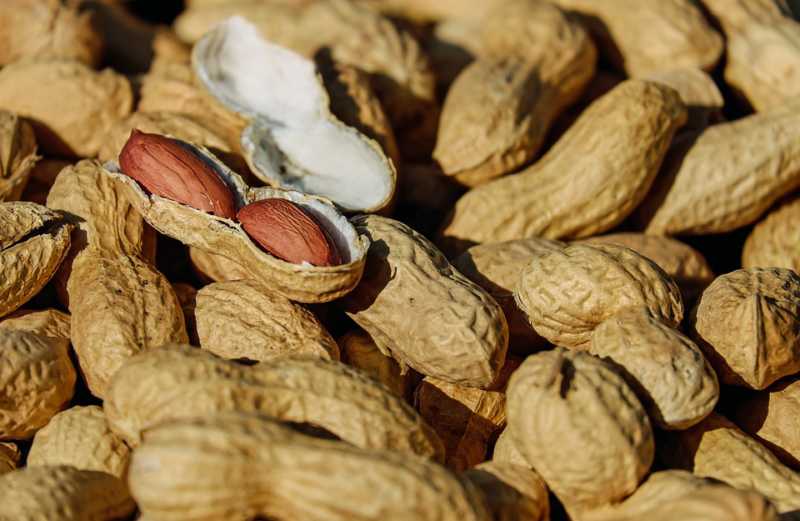If you’re a fan of peanuts, then you may have heard the occasional peanut myth here and there. Then, when you grow up, it takes some convincing to finally realize that there’s more to peanuts than what your family would tell you. So if you’ve been told that peanuts make you fat, or that peanut butter isn’t as healthy as their almond-based alternative, you’re in for quite a surprise.

Are Peanuts Good For You? This is what Science has to say!
Peanuts are notorious for having lots of calories and fat, but very rarely are they praised for their health benefits
Botanically a legume, peanuts are a popular food in its various forms, whether in a dessert, salad, roasted or churned into creamy (or chunky) butter. When you like a certain food, you want to know if it’s healthy, and who better to ask than your doctor, right?
According to a survey from March 2017, over 750 New Zealand-based general practitioners, nurse practitioners, and dieticians answered that they would recommend patients to eat tree nuts rather than peanuts. The reason? Most respondents rated peanuts as being less healthy compared to their tree-based counterparts.
Luckily, these beliefs are heavily misguided and peanuts are quite healthy. Yes, they have many calories and they’re rich in fat, but its unsaturated fat, which is good for your body. Unfortunately, this doesn’t mean that everyone can enjoy the nutty legume; a large percentage of people have an allergy to peanuts and for some, the reaction can be severe.
What are the Big Benefits?
Despite being a legume in nature, the USDA classifies them as a nut because of the nutrition that peanuts and their products provide. They’re a delicious source of protein for vegan eaters, and they’re packed with fiber, antioxidants, and minerals like magnesium and iron.
Most of the fat that’s found in peanuts are mono and polyunsaturated fats that help lower harmful LDL cholesterol. Plenty of evidence links back to peanuts being beneficial for the heart.
A 2017 study in the Journal of the American College of Cardiology proves this. It found that compared to people who didn’t eat peanuts, people who ate at least two servings of peanuts every week had a reduced risk of developing the cardiovascular disease by 13 percent.
The results from other studies show that eating peanuts as part of a balanced diet contributes to a slimmer waistline. The European Journal of Nutrition proves this with a study from 2017, which looked at the health trends of people who ate peanuts versus those who didn’t, for five years. It found that people who ate more nuts (including peanuts) gained fewer pounds and reduced their risk of obesity by 5 percent.
In addition, an observational study even shows that women with an intake of peanut butter that was at least 5 times per week had a decreased risk of type-2 diabetes by 21 percent. Although peanuts contain a lot of calories, you can feel fuller without eating too many because they have fiber and protein.
Compared to Other Nuts
Eating an ounce of nuts throughout the week is a step towards a healthier lifestyle. Since each nut has its own advantages, it’s in your best interest to eat a variety of them.
With regard to the number of calories they contain, peanuts, walnuts, cashews, and almonds are all equal. Conversely, peanuts win in the protein category with a whopping 7 grams per ounce; for instance, they contain twice the amount as walnuts. In terms of fiber, peanuts are a solid second with 2.4 grams per ounce compared to almonds – which have 3 grams per ounce.
Walnuts boast properties like omega-4 fatty acids that are good for the heart while peanuts have plenty of arginines, these amino acids that relax constricted blood vessels thereby improving your blood flow.
Growing peanuts is easier than growing tree nuts because they need less water, which makes them more affordable. For scale, a serving of two tablespoons of peanut butter contains almost 14 percent of a daily magnesium intake.
Does it Matter How I Eat Them?
You may be thinking that whether they’re roasted, raw or crushed into butter, peanuts are peanuts. However, the way you eat them can affect the associated health benefits. A peanut’s skin is what contains helpful phytochemicals and antioxidants so eating them raw will boost the nutritional profile.
Be careful of peanut foods that contain added sugars because eating too much of such foods can lead to health concerns like heart disease. Salted versions contain sodium so if they make the taste better and make you likely to give up a harmful option like French fries, go for it. On the other hand, lay off the salted variety of you have health issues like high blood pressure.
Retaining Health-Boosting Properties
You can improve peanuts’ nutritional profile by mixing them into your dishes, adding them salads to enhance texture, and using them in sandwiches and granola bowls. As for peanut butter, you can whisk it into a dip, soup, milkshake, or sauce.
You can swap out other parts of your diet, such as red meat, for peanuts. You can choose peanut butter as a sandwich ingredient instead of processed meat. You can also swap processed snacks for peanuts.
Most importantly, you should read the labels on packaging to avoid buying peanut food varieties that contain too much salt or sugar. Not every peanut butter is made the same, so avoid the type that’s made using hydrogenated oils because they increase the risk of developing type-2 diabetes and heart disease. Don’t fall for reduced fat varieties because all you do is miss out on healthy unsaturated fat.
An evidence-based article written and reviewed by our experts at Wellnessincheck.




